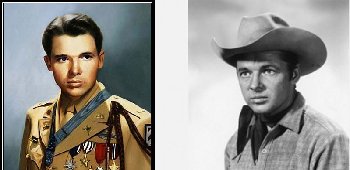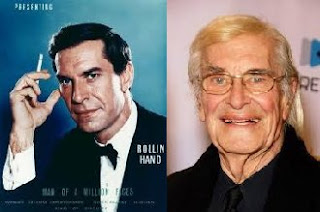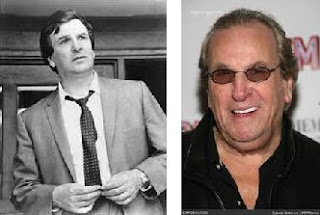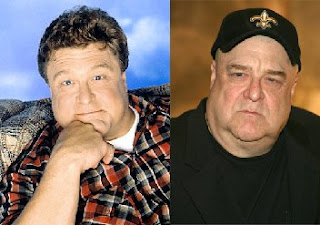 a beauty salon!
a beauty salon!Sheep or domestic sheep (Ovis aries) are domesticated, ruminant mammals typically kept as livestock. Although the term sheep can apply to other species in the genus Ovis, in everyday usage it almost always refers to Ovis aries. Like all ruminants, sheep are members of the order Artiodactyla, the even-toed ungulates. Numbering a little over one billion, domestic sheep are also the most numerous species of sheep. An adult female is referred to as a ewe, an intact male as a ram, occasionally a tup, a castrated male as a wether, and a young sheep as a lamb.
Sheep are most likely descended from the wild mouflon of Europe and Asia, with Iran being a geographic envelope of the domestication center. One of the earliest animals to be domesticated for agricultural purposes, sheep are raised for fleeces, meat (lamb, hogget or mutton) and milk. A sheep's wool is the most widely used animal fiber, and is usually harvested by shearing. Ovine meat is called lamb when from younger animals and mutton when from older ones in Commonwealth countries, and lamb in the United States (including from adults). Sheep continue to be important for wool and meat today, and are also occasionally raised for pelts, as dairy animals, or as model organisms for science.
Sheep husbandry is practiced throughout the majority of the inhabited world, and has been fundamental to many civilizations. In the modern era, Australia, New Zealand, the southern and central South American nations, and the British Isles are most closely associated with sheep production.
There is a large lexicon of unique terms for sheep husbandry which vary considerably by region and dialect. Use of the word sheep began in Middle English as a derivation of the Old English word scēap; it is both the singular and plural name for the animal. A group of sheep is called a flock. Many other specific terms for the various life stages of sheep exist, generally related to lambing, shearing, and age.
Being a key animal in the history of farming, sheep have a deeply entrenched place in human culture, and find representation in much modern language and symbology. As livestock, sheep are most often associated with pastoral, Arcadian imagery. Sheep figure in many mythologies—such as the Golden Fleece—and major religions, especially the Abrahamic traditions. In both ancient and modern religious ritual, sheep are used as sacrificial animals.
The exact line of descent from wild ancestors to domestic sheep is unclear. The most common hypothesis states that Ovis aries is descended from the Asiatic (O. gmelini) species of mouflon; the European mouflon (Ovis aries musimon) is a direct descendant of this population. Sheep were among the first animals to be domesticated by humankind (although the domestication of dogs probably took place 10 to 20 thousand years earlier); the domestication date is estimated to fall between 11,000 and 9,000 B.C in Mesopotamia and possibly around 7,000 B.C. in Mehrgarh in the Indus Valley. The rearing of sheep for secondary products, and the resulting breed development, began in either southwest Asia or western Europe. Initially, sheep were kept solely for meat, milk and skins. Archaeological evidence from statuary found at sites in Iran suggests that selection for woolly sheep may have begun around 6000 BC, and the earliest woven wool garments have been dated to two to three thousand years later.
Sheep husbandry spread quickly in Europe. Excavations show that in about 6000 BC, during the Neolithic period of prehistory, the Castelnovien people, living around Châteauneuf-les-Martigues near present-day Marseille in the south of France, were among the first in Europe to keep domestic sheep. Practically from its inception, ancient Greek civilization relied on sheep as primary livestock, and were even said to name individual animals. Ancient Romans kept sheep on a wide scale, and were an important agent in the spread of sheep raising. Pliny the Elder, in his Natural History (Naturalis Historia), speaks at length about sheep and wool. European colonists spread the practice to the New World from 1493 onward.
Sheep and goats are closely related: both are in the subfamily Caprinae. However, they are separate species, so hybrids rarely occur and are always infertile. A hybrid of a ewe and a buck (a male goat) is called a sheep-goat hybrid, known as geep. Visual differences between sheep and goats include the beard of goats and divided upper lip of sheep. Sheep tails also hang down, even when short or docked, while the short tails of goats are held upwards. Also, sheep breeds are often naturally polled (either in both sexes or just in the female), while naturally polled goats are rare (though many are polled artificially). Males of the two species differ in that buck goats acquire a unique and strong odor during the rut, whereas rams do not.
If you want to read a whole lot more about sheep, go here:
https://en.wikipedia.org/wiki/Sheep
What makes these chicken tenders The Best Chicken Tenders Ever? Well, you'll have to give these a try to find out for yourself, but the secret is in the batter. It makes for a crispy-crunchy coating that's simply irresistible. Dip them into our homemade honey mustard sauce and you'll never look at another tender the same way again!
- HONEY MUSTARD DIPPING SAUCE
- 1/2 cup mayonnaise
- 3 tablespoons honey
- 2 tablespoons Dijon mustard
- 1/4 teaspoon paprika
- 1/8 teaspoon salt
- CHICKEN
- 1 egg, beaten
- 3/4 cup chicken broth
- 1/4 cup milk
- 1 1/2 teaspoons salt
- 1/2 teaspoon black pepper
- 1/2 teaspoon onion powder
- 1 1/2 cups self-rising flour, divided
- 2 pounds chicken tenderloins
- 3 cups vegetable oil
- In a small bowl, combine Honey Mustard Dipping Sauce ingredients; mix well. Cover and refrigerate until ready to serve.
- In a medium bowl, combine egg, chicken broth, milk, onion powder, salt, and pepper; mix well. Whisk in 1 cup self-rising flour until batter is smooth.
- In a large deep skillet over medium heat, heat oil until hot, about 350º. Place remaining 1/2 cup flour in a shallow dish. Dip chicken in flour, coating completely, then into batter, coating on all sides. Cook chicken in batches 7 to 9 minutes, or until golden and no longer pink in center. Drain on a paper towel-lined platter. Serve with Honey Mustard Dipping Sauce.
And gave her mother forty whacks
When she saw what she had done
She gave her father forty-one"
1945 – Anne Murray, Canadian singer and guitarist
Each year on June 20th, National American Eagle Day honors our national symbol, raising awareness for protecting the Bald Eagle. The day also encourages the recovery of their natural environments while providing educational outreach.
The Bald Eagle is both the national bird and the national animal of The United States of America and appears on its Seal.
In the latter 20th century, the Bald Eagle hovered on the brink of extinction in the continental United States. Eventually, populations recovered and on July 12, 1995, the species was removed from the U.S. Federal Government’s List of Endangered Species and transferred to the List of Threatened Species. In June of 2007, as the species continued to thrive, the American Eagle was withdrawn from the List of Endangered and Threatened Wildlife in the Lower 48 States.
Eagle Habitat and Facts
The Bald Eagle’s range includes most of Canada, Alaska, all of the contiguous United States, and northern Mexico. They nest near large bodies of open water where abundant food supplies and old-growth trees abound.
Opportunistic feeders, Bald Eagles survive mainly on fish, swooping down and snatching them from the water. Their nests are the largest nests of any North American bird and the largest tree nests ever recorded for any animal species. The largest recorded eagle’s nest was found in St. Petersburg, Florida. It measured 9.5 feet in diameter and 20 feet deep and weighed in at nearly 3 tons.
These majestic raptors tally up quite a list of facts. A fully grown female Bald Eagle has a wingspan of 7 feet and weighs 7 to 15 pounds. Male eagles are slightly smaller. They also mate for life and live between 20-30 years. As a power bird of prey, an eagle’s sharp sense of sight joins powerful muscles, piercing talons, and beak, making them primed for the hunt.
Although the raptor is also known as the Bald Eagle, the name derives from an older meaning of “white-headed.” The bird isn’t bald at all. The adult eagle is mainly brown with a white head and tail.
HOW TO OBSERVE NATIONAL AMERICAN EAGLE DAY
Join the celebration by learning more about the American Eagle. Whether you visit a nature preserve or learn about conservation, be sure to invite someone to join you. You can also learn about the American Eagle in other ways, too:
- Reading books about the Bald Eagle such as The Eagles Are Back by Jean Craighead George or Bald Eagles: Their Life and Behavior in North America by Art Wolfe.
- Watching documentaries about this majestic raptor, like National Geographic’s Bald Eagle – Nature’s Largest Raptors.
- Listening to a podcast about the American Eagle.
-
- Going birdwatching and bring your camera – you may be able to capture some spectacular images of the eagle soaring above you.
- Learning about conservation efforts.
NATIONAL AMERICAN EAGLE DAY HISTORY
The American Eagle Foundation sponsors National American Eagle Day to raise awareness about the American Eagle, its habitats, and conservation efforts. For more information, visit www.eagles.org.

















